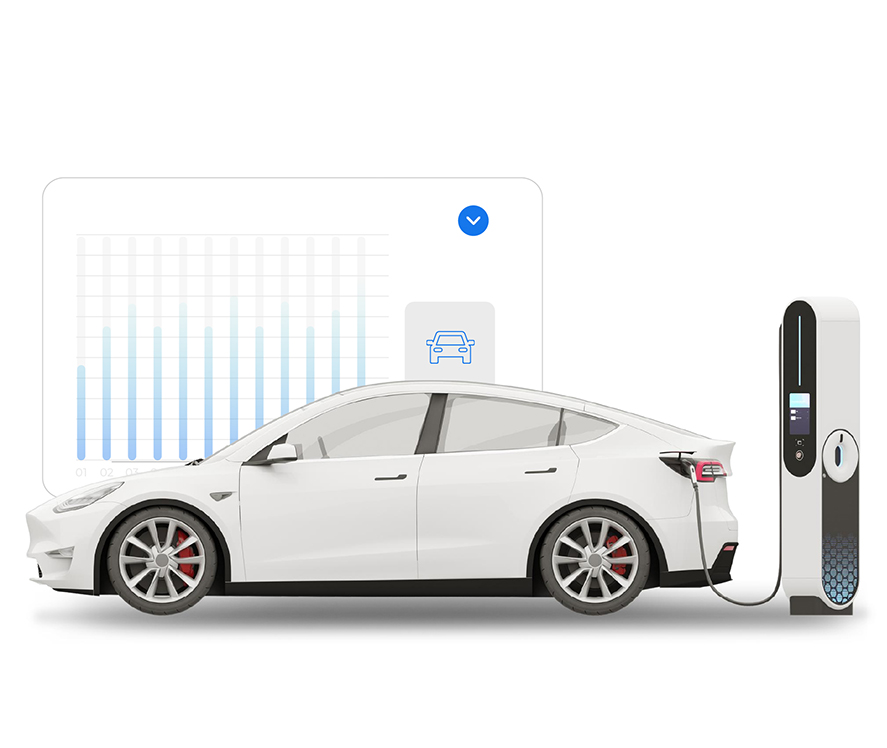Global Auto Finance Industry 2015 : Possibilities and Question Marks
General Motors (GM) became the first ever Original Equipment Manufacturer (OEM) in 1919 to introduce a nonbank source of finance as a way to rejuvenate their automobile sales. Since then, the auto finance and leasing industry has burgeoned into a multi-billion dollar business space especially in established markets such as the US and Europe, where it has authenticated itself as an integral constituent of the automotive industry. During the ongoing decade, however, the interest in car finance and leasing has extended to emerging markets as well, such as the Asia Pacific region (APAC) and South America.

Now that we are over half a decade removed from one of the worst financial crises, the industry is once again garnering a lot of positive attention due to the revival of steady leasing and financing numbers across all regions.
United Kingdom
UK has a strong and well-developed car market wherein its automotive industry is considered one of the biggest success narratives in the country. This is largely due to the vehicle finance software and leasing sector's astronomical contributions to the UK economy each year, wherein in 2013, it boasted a £24.9 billion gross value addition to the country's GDP. In 2014 alone, a record 2.5 million cars were sold, approximately, overtaking the sales numbers of Germany in Europe (though the total number for cars on road is still higher for Germany). Looking more closely at the UK asset finance sector, for the 16th consecutive month, a sustained growth was seen in the market up till the first half of 2015 with solid performances in IT equipment finance (+49% compared to the same month in the previous year), plant & machinery (+12%), business equipment finance (+10%) and car finance (+7%). In the commercial vehicle finance sector, nearly 13% (900,000 units) of the total cars bought were through finance and leasing.
Given these trends, the record sales of new cars in both March and April 2015 (largely due to cheap credit and lucrative financing packages) is indicative of a promising year end result. The consumer sentiment continues to be positive, which is evident from the fact that the total number of credit customers is consistently rising to new levels.
Europe
In the rest of Europe, the growth though has not been as pronounced; however according to JATO Dynamics based in UK, a market leading supplier of automotive business intelligence, the figures indicate a growth of nearly 8.9% in the new car market in the first three months of 2015. It is further reported that throughout 29 European countries, including the biggest car markets of Germany, France, Spain and Italy, 3.62 million new cars were registered which is up by about 0.29 million units more than the first quarter of 2014. Spain, for instance, saw its sales swell by almost 31.2% (nearly 0.27 million units), which was the highest total out of Europe's five largest car markets. For the remainder of 2015, these figures seem to signify a promising end to the year.
United States
Similarly, in the US, more than a quarter of the total new cars sold last year were not cash sales, but leases; which signifies a thriving auto leasing landscape in the region, recently hitting the highest leasing percentages of the past decade. With rising consumer confidence, a dip in gas prices and an overall economic recovery in the industry, the sale of 16.5 million new vehicles nearly matched pre-recessionary levels of 16.9 million automobiles sold in 2006.
In an enlightening study conducted by Edmunds and R.L Polk & Co., it was reported that leasing customers tended to return to the same car brand for their second outing 63% of the time, while customers who purchased their vehicles outright, had only a 39% chance of returning to the same manufacturers. Therefore, auto manufacturers are seen to consistently introduce innovative and lucrative financing options for their buyers.
Prominent brands are taking advantage of their captive finance units, leading to ever increasing lease payments penetration rates. For instance, General Motors, Ford, and Toyota Motors are all looking to secure customer loyalty through this method and hence have more than doubled the penetration rates in the past 4 years.
Asia Pacific
Moving east to the Asia Pacific region, the Australian asset finance and leasing market has not been performing competitively in recent years; nevertheless indications are that the time is ripe for an upswing to take place. The Australian Equipment Leasing Association (AELA) has reported that in 2014, the volume of fleet leasing and general equipment finance totaled $41.9 billion. It comprised of $4.2 billion for fleet and $37.7 billion for general equipment respectively. In the case of China, 76% of the car buyers prefer cash transactions, forcing the auto finance market into a niche role. However, with the contribution of the government and the push by the millennial generation towards a lease-based approach, there has been an upward swing in the trends which saw the automotive finance software volume in China rising from USD 38 billion in 2010 to USD 133 billion in 2014.
Due to the sheer size of the Chinese market, the growth potential is immense and is likely to overtake the US market in the future. Talking about another industrial giant, Japan saw only a modest expansion in its leasing sector where a double-digit growth in construction and transportation equipment finance software led to the isolated spike of nearly 6.23% in 2012 between the years of 2007 till 2014. The growth in the country's auto finance industry has been even more stagnant in the past five years as the overall auto finance volume remained at USD 62 billion in both 2010 and 2014. Even though car ownership is already very high in the country, the persistent growth in the US market exhibits a potential for mature markets such as Japan to expand as well. From the perspective of the emerging markets in the region, Thailand, Vietnam and Cambodia are also looking to make their presence felt in the asset finance management software.
South America
Barring the Brazilian economy in South America, the equipment leasing industry has witnessed a sustained growth in the past few years. Despite it being the largest and most favorable economy for auto leasing in the region, Brazil's mediocre performance affected the overall figures for the region. Additionally, South America's asset finance portfolio fell by nearly 1.03%. Nonetheless, the industry leaders in Columbia, Mexico and Chile are looking to drive change by encouraging innovation and financial penetration, something which Brazil has seemingly been less inclined to get into.
The Road Ahead
As we enter the second half of 2015, it certainly appears that the auto finance and leasing industry is on the upswing and offers genuine prospects for continued growth in the coming years. However, the growth story may be tempered with both inherent and developing risks which may hinder a smooth growth trajectory.
The biggest challenge is the unevenness of the global markets. There is optimism surrounding the US market among the auto leasing executives in the business, but many are reluctant to extend it to the European and APAC regions due to their seemingly inconsistent performance in the past decade. In addition, with the influx of technologically advanced vehicles, many manufacturers are struggling to meet the cost of software content and electronics in autos which now make up nearly 35% of the total manufacturing cost as compared to only 20% a decade ago. Furthermore, in the US, the current federal interest rates are effectively zero, allowing buyers to benefit from a very low cost of usage in leasing their cars. Most economists however predict an imminent increase in the US interest rates, and if that increase happens to be a steep one, then the growth story could face an early correction. In addition, there are variants such as the "peak car" scenario in the US, currency devaluation and rising taxes in Brazil, question marks over the ability of the new government in India to ensure sustained economic growth and regulatory interventions in China on air pollution and congestion that could also affect the overall health of the industry.
Related blogs

The future of EV sales in the United States

NETSOL is a Silver Sponsor at the AFC Autumn Conference 2025




